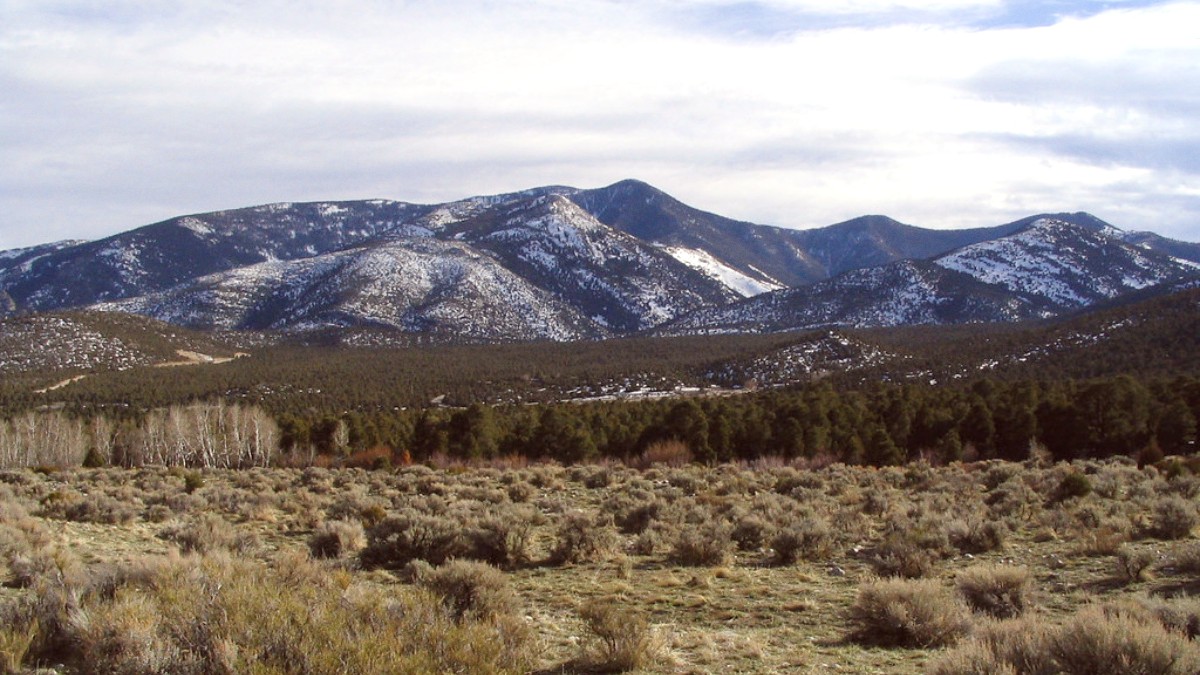
Nevada, USA
Spring (April-May) presents lower elevations with temperatures in the 40s to 60s°F (4-15°C). Higher altitudes remain cooler, notably in early spring. Humidity stays generally low. This time offers refreshing temperatures for hiking and fewer crowds.
Fall (September-October) brings mild and pleasant temperatures, ranging from 50s to 70s°F (10-20s°C) in lower areas. Higher elevations cool faster. Precipitation remains low, leading to consistently clear days. A popular time for comfortable temperatures, fewer crowds, and the beautiful fall foliage peaking in late September and early October, especially aspens along the Wheeler Peak Scenic Drive.
The Great Basin's weather can be unpredictable. Prepare for specific conditions throughout your visit. Monitor forecasts.
Summer monsoon season (July-August) can bring intense, brief afternoon thunderstorms, with heavy rain, lightning, and flash flood risk in washes. Always check forecasts for backcountry activities. High elevation and clear skies create intense sun exposure; use broad-spectrum sunscreen.
(June-August)
All park facilities open. Warmest temperatures for hiking and camping. Lehman Caves tours fully operational. Exceptional stargazing. Abundant ranger programs.
Most crowded. Popular trails see more visitors. Cave tours need advance booking. Accommodations book quickly. Competition for popular spots.
(April-May, Sep-Oct)
Fewer crowds. Pleasant temperatures for hiking. Good light for photography. Easier camping and lodging. Fall foliage in autumn.
Higher elevation roads may close early spring/late fall due to snow. Cave tour availability may reduce. Fewer ranger programs.
(November-March)
Few visitors, offering solitude. Opportunities for snowshoeing and cross-country skiing. Stark, quiet winter beauty. Lehman Caves remain open.
Many park roads close due to snow. Limited access to trails and facilities. Severe weather, very cold temperatures, heavy snowfall. Reduced services in Baker.
Most visitors entering the U.S. Will do so under the Visa Waiver Program or with a visitor visa. Compliance with entry regulations makes for smooth travel.
Citizens of VWP participating countries travel for tourism or business for up to 90 days without a visa. These travelers secure an approved Electronic System for Travel Authorization (ESTA) before departure.
Citizens of countries not part of the VWP apply for a B-1 (business) or B-2 (tourism) visitor visa. This process is more involved.
The United States Dollar (USD or $) is the official currency. ATMs are in larger towns like Ely, but are scarce in smaller communities near the park. Cash withdrawal in major cities before arrival is wise. Credit cards are widely accepted, though some smaller establishments may prefer cash.
Luxury Traveler Daily Costs: Accommodation $200+ (higher-end hotels/rentals). Food $80-150+ (frequent restaurant dining). Transportation $50+ (premium rental car). Activities $50+ (private tours, specialized gear). Total: Roughly $380+ per person.
Tipping is an established part of American service culture. Tips supplement service industry workers' wages.
Here is a more specific breakdown of typical costs for your travel.
The remote nature of the region calls for preparedness. Knowledge of health and safety aspects enhances your travel.
For general tourism, no mandatory vaccinations or health screenings apply.
Before your trip, visit a healthcare provider. They may advise routine vaccinations like MMR, DTaP, Polio, Varicella, Hepatitis A, B, and Tetanus.
Tetanus is often advised for outdoor activities where cuts or scrapes occur.
The Great Basin's environment presents specific health challenges.
Dehydration: The Great Basin is arid. Drink significantly more water, especially when active. Carry at least 1 gallon per person per day. Electrolyte supplements can be beneficial.
Altitude Sickness (AMS): Headache, nausea, dizziness, fatigue. Wheeler Peak is high altitude. Ascend gradually. Stay hydrated, avoid alcohol, limit strenuous activity on your first day. If symptoms develop, descend.
Sunburn: High elevation sun. Use broad-spectrum Sunscreen with high SPF, wear a Wide-brimmed hat, and Sunglasses. EltaMD UV Clear Broad-Spectrum SPF 46 for protection.
For all emergencies (police, fire, ambulance) throughout the U.S. This number dispatches responders.
The nearest hospital is approximately a 1-hour drive. Smaller clinics in nearby towns have limited services. Air ambulance transport may be needed for serious emergencies.
Baker has very limited or no pharmacy services. Bring all required prescription medications.
Be aware of environmental hazards specific to the region. Always lock your vehicle. Do not leave valuables visible, and ideally, take them with you or store them out of sight. Report any suspicious activity.
Travel insurance is advised for all international travelers to the U.S., and for domestic travelers in outdoor activities.
Look for policies covering medical emergencies, emergency medical evacuation (expensive in remote areas), trip cancellation/interruption, and lost luggage. Consider World Nomads, SafetyWing, or Insubuy.
Ensure your policy covers adventure activities if you plan backcountry hiking, climbing, or other higher-risk activities. Review policy details.
For flight disruptions, AirHelp can assist passengers in receiving compensation for delayed or canceled flights.